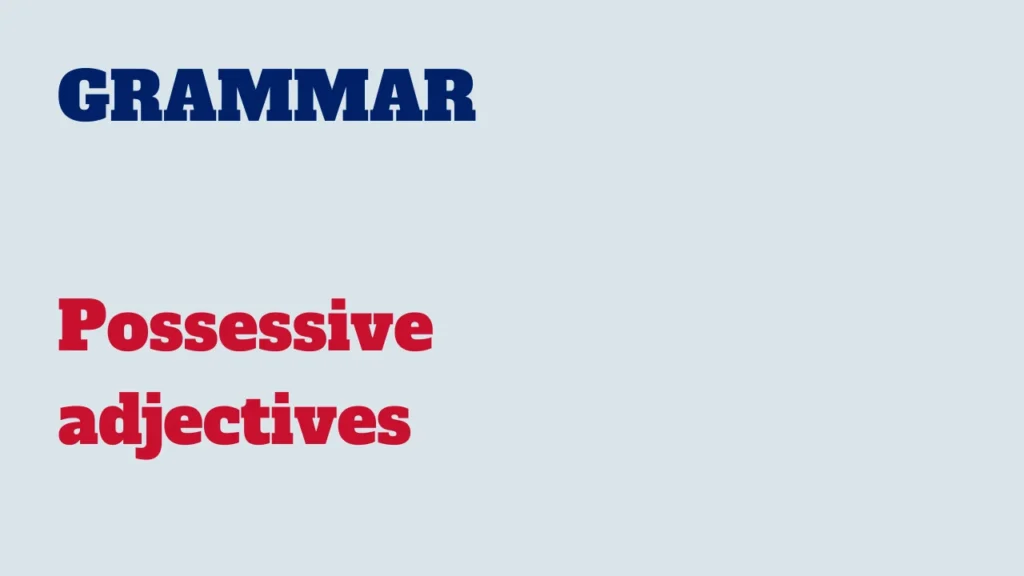Possessive adjectives play a crucial role in indicating ownership and possession in English. They help clarify who owns or possesses a particular object or attribute.

In this grammar lesson, we’ll explore possessive adjectives, their forms, and how to use them correctly to convey ownership in sentences.
Forms of possessive adjectives:
1. My:
- Indicates possession by the speaker.
Example:
This is my car.
2. Your:
- Denotes possession by the person being addressed (singular or plural).
Example:
Is this your backpack?
3. His:
- Signifies possession by a male person.
Example:
That is his bicycle.
4. Her:
- Indicates possession by a female person.
Example:
This is her house.
5. Its:
- Denotes possession by a non-living thing or an animal.
Example:
The cat is washing its paws.
6. Our:
- Shows possession by a group that includes the speaker.
Example:
We are going to our favorite restaurant.
7. Your:
- Denotes possession by more than one person being addressed (plural).
Example:
Are these your keys?
8. Their:
- Signifies possession by a group that does not include the speaker.
Example:
The children are playing with their toys.
Using possessive adjectives:
1. Possession with singular nouns:
Use possessive adjectives before singular nouns to indicate ownership.
Example:
This is my cat.
2. Possession with plural nouns:
Apply possessive adjectives before plural nouns to convey ownership within a group.
Example:
These are our books.
Possessive adjectives are essential for clearly expressing ownership in English. By mastering the use of these adjectives, you enhance your ability to communicate precisely and convey relationships between people and objects. Keep practicing, and soon, using possessive adjectives will become second nature. Happy learning!



